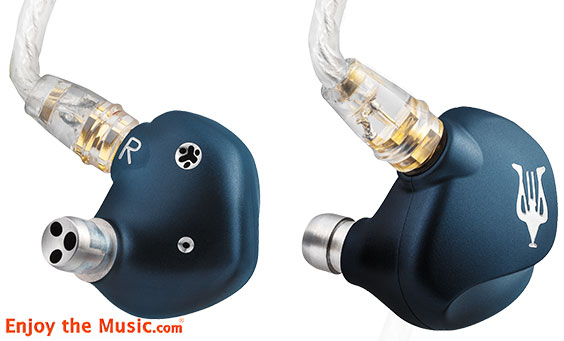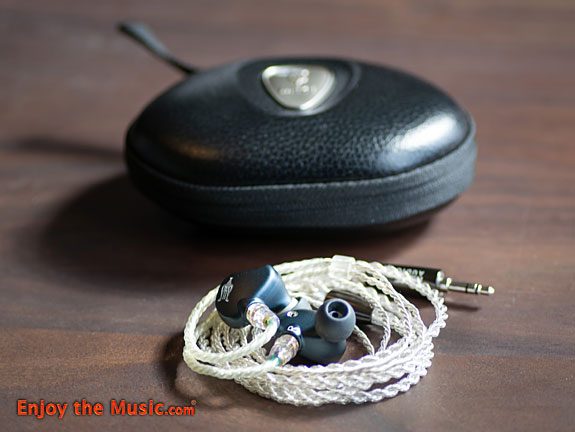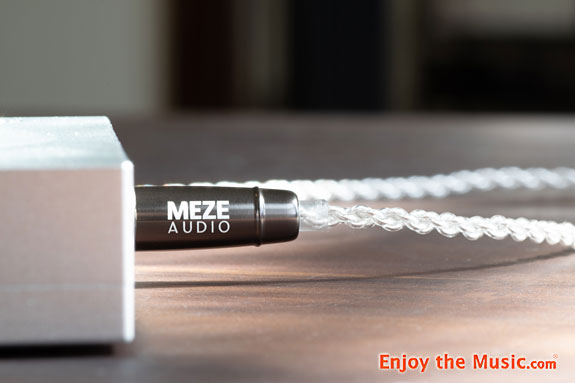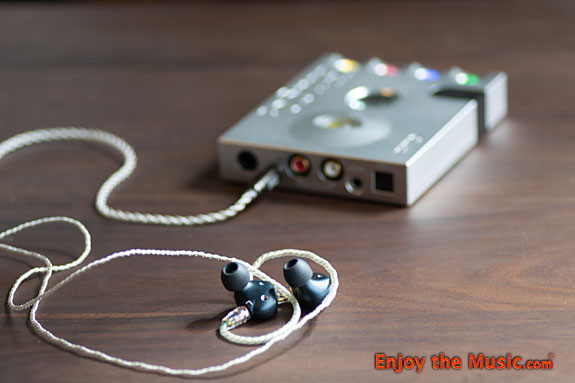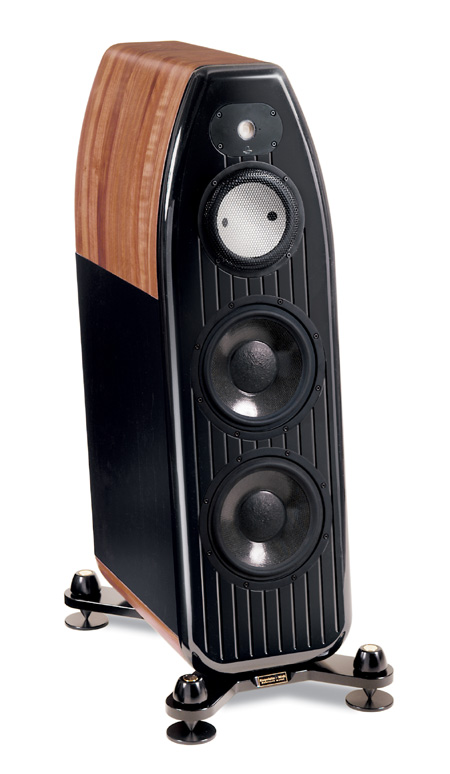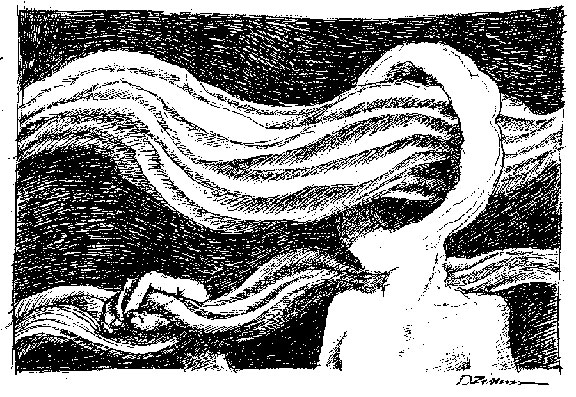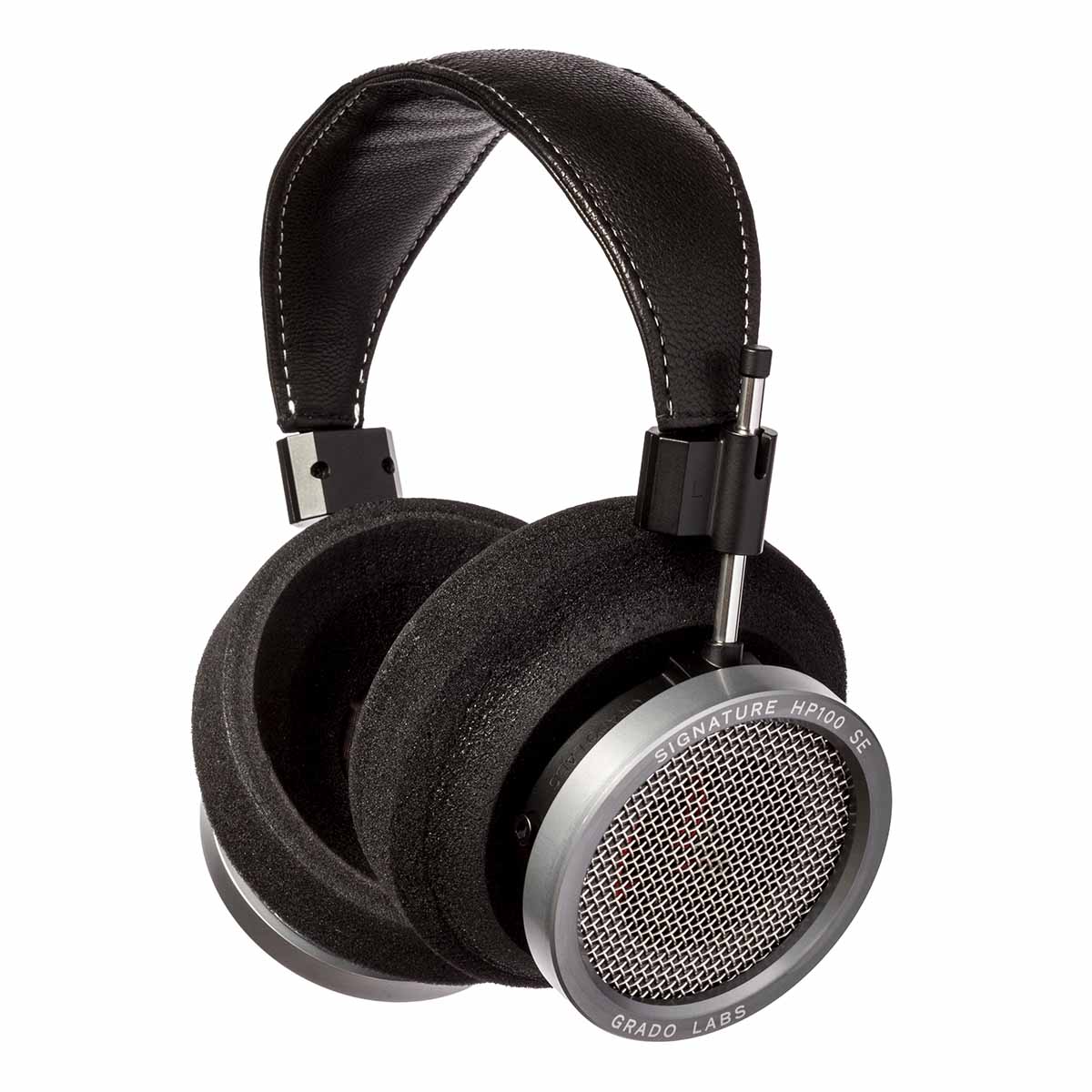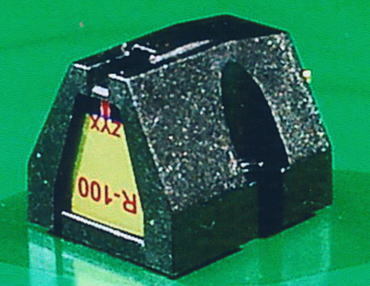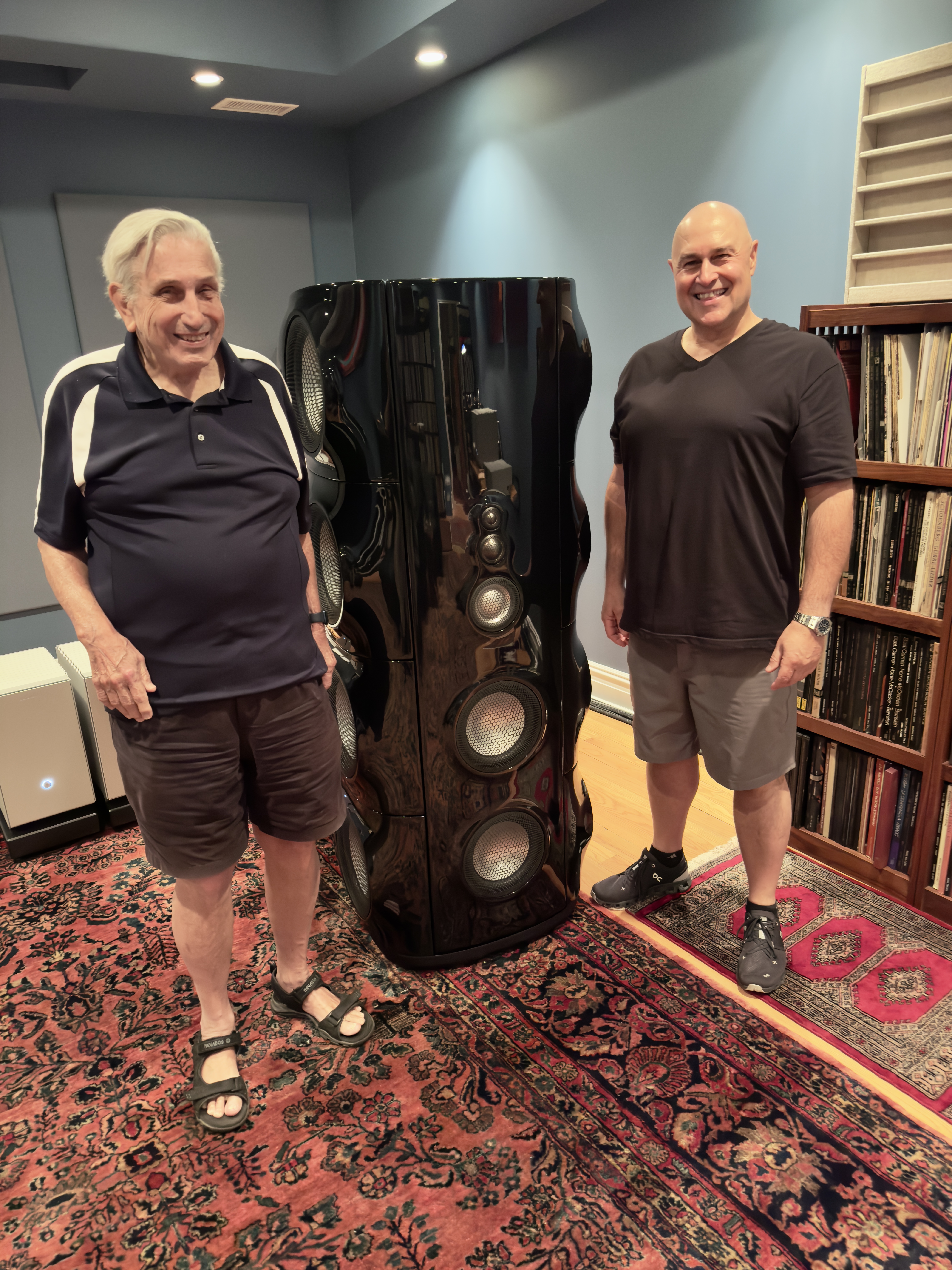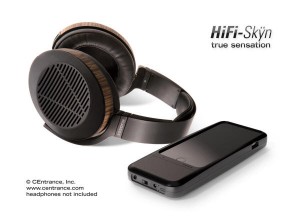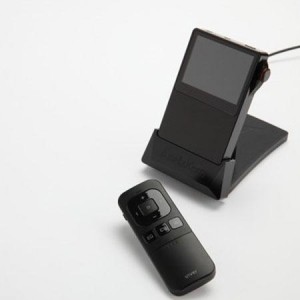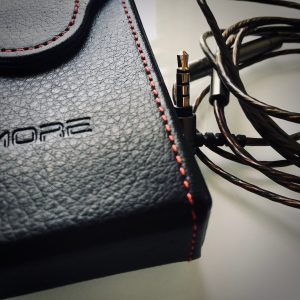Worth The Wait: Meze delivers an artful and meticulously crafted masterpiece.
With this article, Positive Feedback continues its content-sharing relationship with Enjoy the Music. Dave Hanson shares his thoughts on the Meze Rai Penta In-Ear Monitors.
Dr. David W. Robinson, Editor-in-Chief
I first encountered the Meze Rai Penta ($1099) at CanJam SoCal in 2018, and at the time, I found myself absolutely floored by it, noting that it had the potential to be a best-in-class all-rounder. Of course, at that time, it was only an early prototype, but seeing it again and again at subsequent shows over the next year, I always came out feeling the same way—wow, this is the real deal. Getting the product to market took quite some time, as the team at Meze wanted to ensure the final design aligned with their ambitious vision. The name, translated, stems from the words "Heaven" (Rai) and "Five" (Penta). The five, of course, refers to the five-driver array format, consisting of four balanced armatures and one dynamic driver.
The precision machined housing, however, is where the genius lies. Each piece is milled to perfectly align the phase and timing from the drivers to your eardrums, eliminating imperfections generally found in many plastic tubes and dampener systems. The design also incorporates a Pressure Equalization System—a small port in the housing that helps regulate internal chamber pressure in front of and behind the driver assembly. The shape of the build itself is rather unique, with one of the most attractive and ergonomically-sound designs I've seen from a universal fit IEM. The edges of the anodized aluminum housing are nicely rounded, and the earpiece has an incredibly low profile—it's not one of those designs that protrudes from the ear in an unsightly way.
Provided you have the right tips, the Rai Penta seats snugly and very comfortably within the ear—which is great for both aesthetic and practical purposes. After a little initial trouble out of the gate, I found it required very minimal periodic adjustments, relative to most other IEMs to keep in an optimal position with a good seal.
As I said previously, tips played a very key role, as they often do, in getting the sound and fit dialed in. While this will depend a bit on your unique individual ear shape, I had some trouble getting a good seal consistently with the rubber stock tips, due to the smaller body shape of the IEM. I found foam tips to be a poor match sonically to the point that at one juncture, I thought there might be something wrong with the IEM itself.
The last option I tried was the much-lauded Azla Sedna EarFit tips, and once I had those installed, everything changed. All the good things I remembered from the early auditions came rushing back into focus and the Rai Penta once again began to show its potential as a best-in-class all-rounder. I would highly recommend auditioning these tips with the Rai Penta—particularly if you aren't 100% sure about the integrity of the seal, because for me they were a game-changer. (Do note that the Sedna Earfit tips generally run half a size or so larger than normal—I generally use medium tips, but with the Sedna Earfit, I had to order a size S/M.)
Once that was sorted out, I found the Rai Penta to be a fantastic piece, using it for everything from video production to casual and analytical music listening.
Winning Hearts And Minds
The Rai Penta offers a sweet and pleasant overall tonality, with a good body sound and some sparkle through the upper midrange and treble that emphasizes detail and sweetness. In this regard, I found it did a great job of bridging the gap between analytical and musical. Detail to stimulate the mind, with enough sweetness to stimulate the soul.
The bass frequencies offer decent extension, seeming to roll off a bit just around 30Hz. Through the midbass, there is a decent sense of weight, but I would say the Rai Penta is more neutral here than anything. The bass frequencies are exceptionally clear and well separated, giving you a great view of what's going on down low.
I wouldn't call the Rai Penta particularly punchy or impactful, though I wouldn't say it is totally deficient in that department either. It generally falls within a "safe" range for most people, if you're looking to cover genres like rock, classical, jazz, etc., this is going to be an outstanding fit. If you want something to punch your lights out for electronic, hip-hop or metal, you'll probably want to look elsewhere.
Digging in further to the Rai Penta's sound, the lower midrange offers good body and weight for what I would consider a neutral-class tuning. The upper midrange frequencies were very sweet and detailed, but came with a slight catch 22, as they were also prone to some very slight brightness. How much of an issue is it? Not much. Think along the lines of the Stax SR-009 or Focal Utopia – both are also prone to some intensity in this region, which can enhance detail retrieval, but can also make more aggressive genres such as metal and electronic slightly fatiguing, depending on the recording.
This gels pretty well with my observation on the bass response—again, paired with rock, jazz and classical music, the Rai Penta usually acquitted itself very, very well, offering a potent combination of detail and body that was exceptionally satisfying. I would say this makes it more of a diverse specialist with wide appeal, rather than a pure all-rounder. Given most audiophile tastes, and their proclivity for procuring high-quality recordings, Meze is catering to the 70 or 80% here by giving them something that is going to be extremely friendly to their tastes.
Treble is incredibly clear and grain-free. I think one could safely say the Rai Penta and Campfire Andromeda sit at the top of the hill at this price point when it comes to clarity and resolution; and will likely be joined at the hip as audiophiles mull a decision between the two highly regarded, identically-priced IEMs for years to come. Personally, I don't think you can go wrong with either one. I imagine many will be agonizing over this choice, so to that end, I'll add a few comparison notes that should shed further light on the Rai Penta's sound.
Benchmarking Against Andromeda
Comparing the Rai Penta to the similarly priced Campfire Andromeda is an interesting proposition. Both could be considered almost perfectly neutral, but in two different shades. The first thing you'll notice out the gate is that the Meze offers slightly more bass and lower midrange body and stays a little more reserved out through the treble region. The Andromedas on the other hand, are slightly brighter and extend further up top giving the music just slightly more air. Which one is closer to reality? I think it depends on your personal experience. Accuracy here becomes somewhat subjective based on one's cumulative experience of hearing music in different ambient settings.
In my experience, the Mezes probably offer a little bit more realistic sense of body and weight, whereas the Andromeda's offer a crisper cleaner sense of extended air and space. To be a little bit more tangible, the Andromedas are like listening to music in a slightly larger concert hall whereas the Rai Penta is like listening in a slightly smaller concert hall. In the case of the Andromeda, or the larger concert hall, the music is more diffuse. With the Meze, for this comparison's sake, the extra reverberations of a smaller room add slightly more warmth and fullness to the sound. Neither one is ultimately that much more or less accurate in terms of portraying the music, it is more a matter of perception and preference.
The ultimate point being, the Rai Penta adds very little in the way of coloration and it would be fair to call it a true reference point. At the end of the day, compared to just about any other IEM, each of these aforementioned pieces will come off as neutral.
Final Thoughts
The Rai Penta is a fantastic accomplishment, and well worth the wait! In terms of technicalities—clarity, resolution, attack, decay and imaging, Meze absolutely hits it out of the park here. How you like the tuning will depend on your genre tastes, but as I said, for jazz, classical and rock—particularly with good recordings, the Rai Penta will put a huge smile on your face. If you're in the market for a beautiful, revealing piece that fits the "neutral, but not boring" mold, you absolutely must give the Meze Rai Penta an audition.
Equipment Used in This Review
- Campfire Andromeda
- Campfire Vega
- Westone W60
- FiiO FH7
- Periodic Be
- HeadAmp Gilmore Lite MkII
- Chord Hugo 2
- iFi Audio Micro iDSD Black Label
- Monoprice Monolith Liquid Gold
- FiiO M15
- FiiO M11 Pro
- Stax L300 Limited
- ZMF Auteur
- Sennheiser HD800
- iFi Audio iDSD Black Label
- Roon
- Audirvana
- Adobe Audition
- Tidal HiFi
Specifications
- Type: In-ear monitors
- Frequency response range: 4Hz to 45kHz
- Sensitivity: 110dB @1mW
- Impedance: 20 Ohms
- Driver Configuration: Four balanced armature, one dynamic
- Cable Connection: MMCX
Meze Rai Penta
Price: $1099
Meze Audio
Iuliu Maniu Street
Nr. 38, 1st floor, Ap. 2
Baia Mare, Romania 430131




